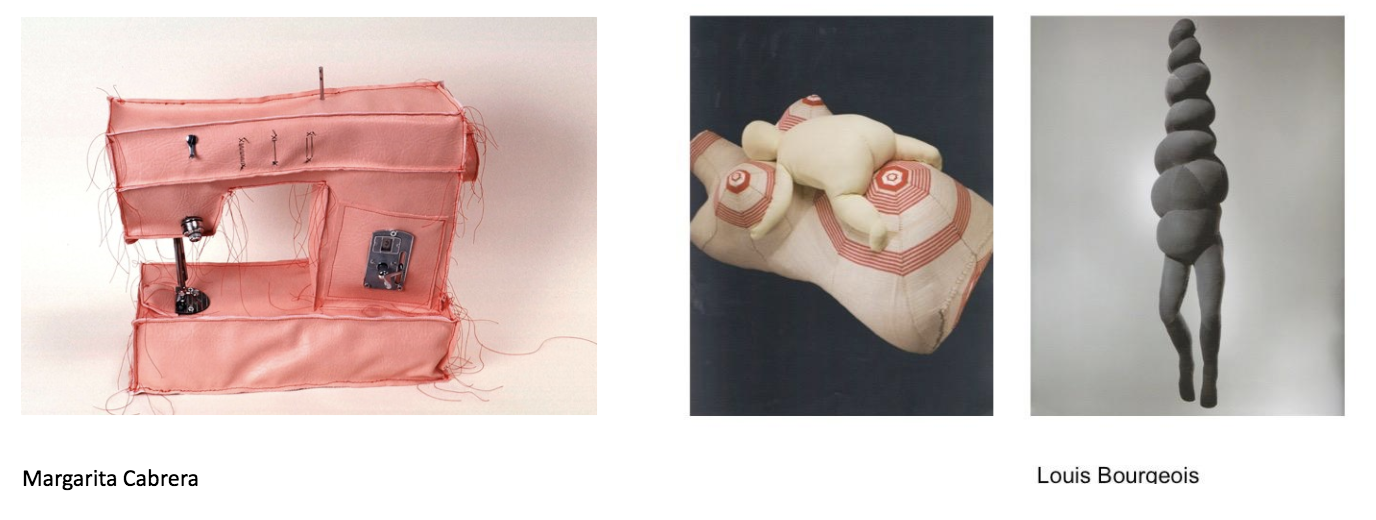Doppelgänger
Due: March 6
“Doppelgänger: (German “double walker”) is a paranormal double of a living person, typically representing evil or misfortune. In modern vernacular, the word has come to refer to any double or look-alike of a person.” (Wikipedia.org)
Recreating an everyday object out of new materials, such as fabric, changes our experience of that object. In this assignment we are going to explore this potential. How does the new weight or texture change our understanding of the object? How does the particular fabric change it? How does our interaction change?
Select an object from your life that you will replicate in cloth. Using the pattern-making skills and sewing construction techniques we’ve learned in class, make a textile doppelgänger of your object. We will use time in class to begin the patterning work. Choose an item that is not too simple (a piece of chalk) and not too complex (an inline skate).
You can make your doppelgänger the same size, smaller or larger. Shifts in scale must be attended to—if you are re-creating an object in at a tiny scale, you must hand-sew in the small details. On the other hand, if you are going large, remember to scale up all materials—thread might become rope when sewing a large sculpture.
Come prepared to share your Doppelgänger with the class.
Documentation
- Documentation is due within one week after the assignment due date above.
- Upload your documentation to the Gallery section of the class website. Here are instructions on How to Submit Your Project to the Gallery.
- Your documentation should include:
- a paragraph outlining your explorations: your process, discoveries, successes, challenges.
- photographs or short videos of your objects (Please embed the video so it can be directly viewed; you may either upload an MP4 file to our server or use supported third-party hosting, such as Vimeo or Youtube, etc.)
Assessment
Points for this project will be divided amongst the following criteria:
CONCEPTUAL RIGOR/ CONTENT: The maker develops works that pose questions, are informed by deliberate content, and critically engage viewers beyond the aesthetic realm. Maker demonstrates awareness of their work’s existence within the contexts of culture, history of the field, and critical theory.
EXPERIMENTATION/ RISK-TAKING/ INVENTIVENESS: The maker’s willingness to take risks (in composition, formal choices, materials, ideas, and content) is evident. Also important is the maker’s openness to new ideas, chance occurrences, and feedback throughout the creative process.
EXECUTION: Decisions about materials used and the manner in which the work is constructed, fabricated, and composed are deliberate. The maker’s choices indicate an awareness of how formal issues, materials and processes contribute to the interpretation or experience of the work.
DOCUMENTATION: Documentation well represents the works. It is clear, focused, and without extra elements that distract from experiencing the work. It includes both written reflection and photographic or video elements. Photographs are large enough for us to easily view the works.
